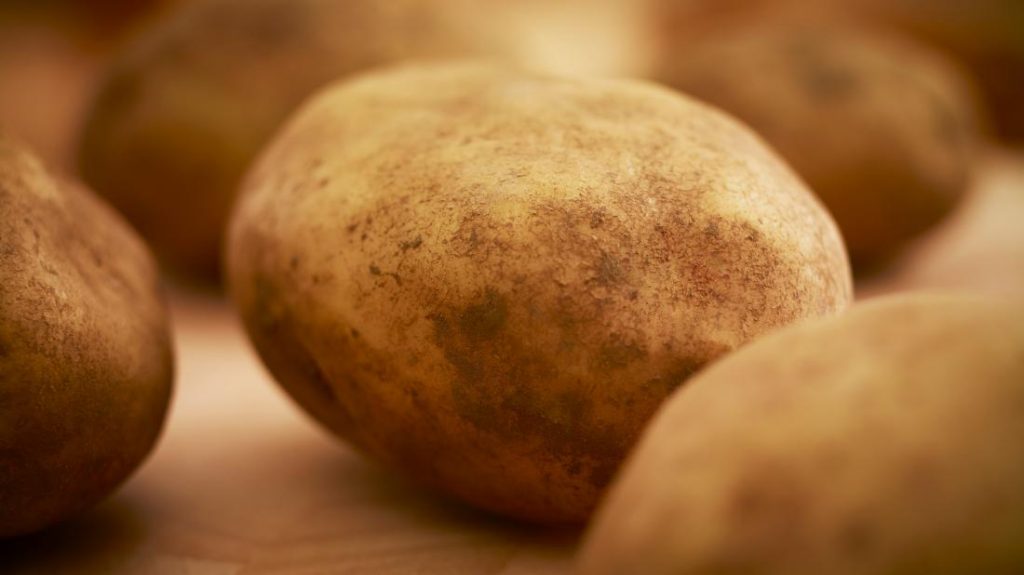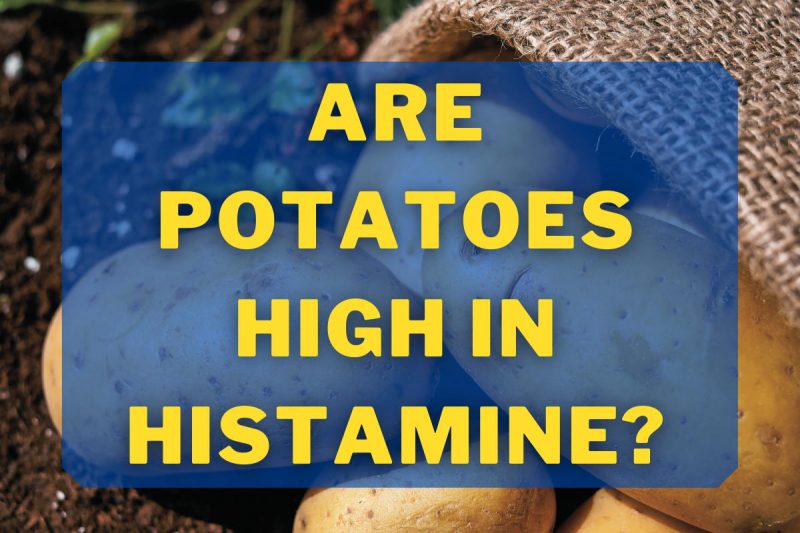Yes, potatoes contain histamine, but they are low histamine foods. Potatoes themselves aren’t very high in histamines, as they don’t seem to cause intolerance reactions after eating them. Many times, the way the potatoes are cooked or prepared seems to be the biggest factor in causing the reactions. It appears that most potatoes cooked in low histamine oil are fine as long as they are not fried.
Table of Contents
Are Potatoes High Histamine?
Potatoes are a staple in many parts of the world because they are high in calories and delicious, and you can cook many different dishes with each type. Potatoes, in turn, are an ideal food for many people with symptoms of histamine overload. But the histamine content of potatoes does fluctuate depending on how you cook them, with boiled or steamed potatoes having the lowest levels.
This means mashed potatoes are low in histamine but only made with fresh potatoes, not potato chips (see below). If you fry potatoes, histamine levels go up. It doesn’t make a difference what color potatoes you buy: white, red, blue, Idaho, tan, or whatever, because all potatoes are low in histamine. But to be clear, french fries are only low histamine if they are made in low histamine oil and not fried.
Most people’s problems with potatoes and histamine come from other ingredients or how the dish is prepared. However, if you feel that eating potatoes have life-threatening symptoms, talk to your ENT doctor about a potential potato allergy. They may recommend that you avoid veggies in the nightshade family because true nightshade allergies are rare, but it’s not uncommon for someone allergic to one type of nightshade to start allergic to another. Note that this is a separate issue from histamine intolerance (although there is a significant overlap of symptoms).
Are Sweet Potatoes High in Histamine?

Sweet potatoes are a great alternative to regular potatoes for those who have a problem with night wort. It’s not related to regular potatoes, but has a similar texture and more nutritional value, making it a great substitute. Another benefit of sweet potatoes is that they generally have less of an impact on your blood sugar, which helps curb inflammation. Low-histamine sweet potato options include baked chips, coconut oil mashed, and air-fried potato chips.
Canned Sweet Potatoes Histamine Levels
Raw sweet potatoes are low in histamine, and in general, canned sweet potatoes still fall into the low histamine category.
A study designed to test the effects of storage temperature on canned foods (fruit and syrups) suggests that canning stored at higher temperatures may increase histamine levels in certain foods.
This means that canned sweet potatoes (low histamine) should remain low histamine as long as they are stored properly.
Keep in mind that this study was not specifically conducted on canned sweet potatoes. We can’t be sure until we do research on canned sweet potatoes.
Are Potato Chips High in Histamine?
Store-bought chips are usually lower in histamine; however, you never know what oil was used to treat the chips. If a high-histamine oil is used, or if the chips are flavored with high-histamine herbs and spices, you may not respond to the chip histamine itself, but to the ingredients that make the chips. Additionally, when oils are heated at very high temperatures, they produce highly oxidized chemicals that can lead to inflammation.
This is an important consideration when trying any low-histamine snack, as toppings aren’t the only way to boost histamine levels. Your best bet for keeping your histamine levels low in potato chips is to make homemade potato chips, store them in the refrigerator, and reheat them in the oven or toaster oven. Be sure to use a low-histamine oil and soak the potato chips in water before thoroughly drying them to remove as much starch on the outside as possible and promote crispness.
Is Potato Starch High in Histamine?
Potato starch is low in histamine and is usually isolated as a by-product of processing. To extract the starch, producers use a drying process to separate the starch from the rest of the potato. Once thoroughly dry, it acts like white flour and is an excellent gluten-free thickener for sauces and gravies. It’s also common in gluten-free pasta and gluten-free flour mixes, although it may not be a 1:1 substitute for any particular flour.
Is Potato Flour High in Histamine?
Potato flour is different from potato starch, although it is also ground from undercooked dried potatoes, and both products are lower in histamine. However, potato flour is made from the whole potato rather than any of its individual parts, so using a lot of flour will add a unique potato flavor. If after a low-histamine diet, you feel that your symptoms of histamine overload are exacerbated, then you may want to avoid potatoes for at least two weeks.
This is because, as mentioned above, whole potatoes are rich in oxalates and lectins, which can exacerbate allergy symptoms in sensitive individuals. So, while potato flour is lower in histamine, it is higher in histamine than cig flour or tapioca flour, both of which are low-histamine substitutes for potato flour.
Are Red Potatoes High in Histamine
Red potatoes are in the same category as other potatoes because they are considered low histamine foods. However, the same rule applies, if they are made with high histamine ingredients or fried, then eating them will produce higher levels of histamine.
Are White Potatoes High in Histamine
Unsurprisingly, white potatoes are also a low histamine food and are safe to eat. Keep in mind that they are also safe to prepare for any ingredient or type of cooking that may raise their histamine levels.
Tips to Keep Potatoes Low in Histamine

It’s wise to remember that it’s not the histamine in potatoes that’s causing your bad reaction, but the result of histamine when you have too much of it in your body. These tips for keeping dishes low in histamine apply to all cooking, but you’ll find that certain cooking methods and types are more susceptible to histamine sensitivity.
Only pair potatoes with other low-histamine foods, or better yet, with aggressive antihistamine foods.
- Avoid toxic compounds and endocrine disruptors released by high heat cooking and/or using non-stick cooking tools.
- Use stainless steel, enameled pots, pans, ceramic, glass, or cast iron coated cookware; for a quick “slow cook” use a pressure cooker or instant.
- Prepare food by boiling, steaming, sautéing, stewing, and roasting at medium-low heat.
- Avoid smoking and “slow cooking” methods, including heating food for more than an hour, and/or “setting” food in the refrigerator or on the counter for more than an hour.
- Never store food in plastic containers; use glass storage containers.
- Freeze all leftovers instead of refrigerating.
Summary
Potatoes themselves are low in histamine. However, they can be cooked or made with ingredients that may increase histamine levels. The best thing you can do is monitor the cooking of the potatoes and limit your portion sizes.

